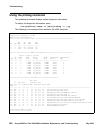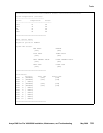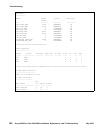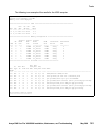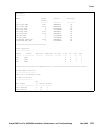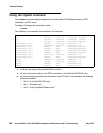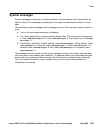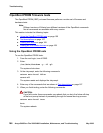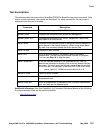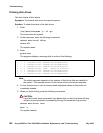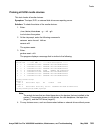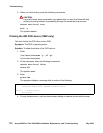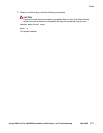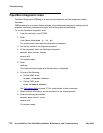
Tools
Avaya CMS Sun Fire V880/V890 Installation, Maintenance, and Troubleshooting May 2006
165
System messages
System messages can alert you to system problems, such as a device that is about to fail. By
default, many of the messages are displayed on the system console and are stored in /var/
adm.
You can display system messages with the dmesg command. Here are some factors to keep in
mind:
● A list of the most recent messages is displayed.
● The /var/adm directory contains several message files. The most recent messages are
in /var/adm/messages and in /var/adm/messages.0. The oldest are in /var/adm/
messages.3.
● Periodically, a new file is created, and the /var/adm/messages.3 file is deleted, /var/
adm/messages.2 is renamed /var/adm/messages.3, /var/adm/messages.1 is
renamed /var/adm/messages.2, and /var/adm/messages.0 is renamed /var/
adm/messages.1.
The message files may contain not only system messages, but also core dumps and other data,
which can cause /var/adm to grow quite large. To keep the directory to a reasonable size and
ensure that future core dumps can be saved, you should remove unneeded files periodically.
You can automate the task by using crontab. See your Sun system documentation for
information on crontab.




